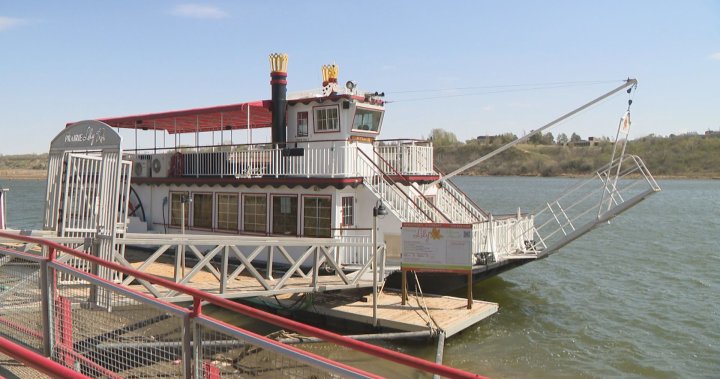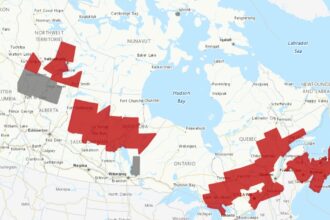The iconic red and white Prairie Lily riverboat, a beloved fixture on Saskatoon’s South Saskatchewan River, sits idle at its dock as unprecedented low water levels and extensive sand buildup have forced operators to cancel voyages indefinitely.
“We’ve been monitoring this situation closely since spring, hoping for improvement, but the conditions have only worsened,” explained Joan Steckhan, co-owner of the Prairie Lily. “In my 12 years operating this vessel, I’ve never seen the river this low during peak season.”
The Prairie Lily typically offers daily cruises from May through October, serving approximately 20,000 passengers annually. The vessel, which requires a minimum depth of about four feet to navigate safely, now faces sections where water levels have dropped to dangerous lows while sandbars continue to expand.
Local hydrologists attribute the problem to multiple factors. The South Saskatchewan River basin has experienced below-average precipitation over the past 18 months, with spring runoff measuring nearly 40% below normal levels. Upstream reservoir management and increasing water demands have further exacerbated the situation.
“This isn’t just about one business,” noted Michael Peterson, hydrologist with the Saskatchewan Water Security Agency. “These conditions reflect broader concerns about water security across the prairie provinces as climate patterns continue to shift.”
The Prairie Lily’s predicament highlights growing water management challenges throughout western Canada. According to Environment Canada data, the past decade has seen increasingly erratic precipitation patterns across the prairie provinces, with more pronounced dry periods interrupted by intense but brief rainfall events.
For Saskatoon, the riverboat’s suspension represents both economic and cultural losses. Beyond the direct impact on Prairie Lily staff, local tourism officials estimate the boat attracts visitors who contribute approximately $1.2 million annually to nearby restaurants, shops, and accommodations.
“The Prairie Lily has become part of our city’s identity,” said Councillor Sarah Davidson. “It’s not just a tourist attraction but a venue for countless local celebrations, from weddings to corporate events. The city is exploring whether dredging specific sections might provide a temporary solution.”
Steckhan and her team remain hopeful they can resume operations later this season if conditions improve, but acknowledge the unpredictability of Saskatchewan’s weather patterns. For now, they’re offering land-based events at their riverside location and maintaining the vessel for what they hope will be a return to normal water levels.
The situation raises important questions about how prairie cities will adapt to changing water conditions in the coming decades. As climate scientists predict increasingly variable precipitation patterns, will infrastructure investments need to shift toward ensuring recreational and commercial water access even during prolonged dry periods?
“We’re committed to navigating these challenges,” Steckhan said, with a hint of irony in her voice. “Though right now, there’s simply not enough water to navigate at all.”










